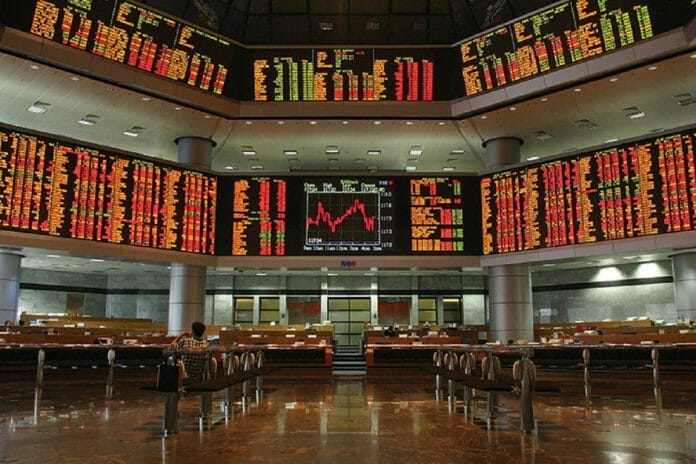Financial expert, Ian Tai of KC Lau blog conducted a short survey on Dividend Investing, from participants, he learnt that the top obstacles to investing for dividend income are as follows:
- Don’t know what stocks to buy
- Don’t know where to start
- Don’t know when to buy
- Don’t have time to study investments
- Don’t have loads of capital to generate meaningful dividends.
In response, he addressed the above by introducing “Dividend Investing” in the format of 5W1H. Of which, investors will have a better idea on how dividend investing works and if such is suitable. Also, show how to start investing to earn that first dividend dollars in months to come.
1. What is Dividend Investing?
Dividend investing is about building a portfolio to generate increasing dividends over the long-term. To do this, the focus is on accumulating fundamentally solid stocks when they are undervalued and hold onto them for regular dividends. As such, there are 3 keywords to dividend investing:
- Long-term
- Fundamentally solid stocks
- Undervalued
Long-term refers to an aim to accumulate (keep) rather than trading (sell).
Fundamentally solid stocks refer to stocks that deliver consistent growth in:
- Sales
- Profits
- Operating Cash Flows
While doing so, they keep a strong balance sheet: lots of cash and low debt.
Undervalued here aims to avoid overpaying for fundamentally solid stocks. This is because an investment is only good if a stock is both fundamentally solid and undervalued. Instead of price charts, dividend investors value these shares by a handful of valuation ratios namely: P/E Ratio and dividend yields.
2. Why Dividend Investing Works?
Dividend investing is effective in attaining more consistent returns for investors. This is because of 2 main reasons:
1. It focuses only on fundamentally solid stocks. Hence, it also means that many other stocks that incur losses, have declining profits, poor business models, and unpredictable earnings would be avoided altogether as they couldn’t produce a consistent stream of dividends to you.
2. Dividend investors want to attain higher dividend yields from investing. So, in order to do that, stock price must be lower relative to dividend per share (DPS). For instance, if a stock pays RM 1 in DPS, investors will achieve as much as 5.0% in dividend yield if they buy it at RM 20 a share. But, if they buy this same stock for RM 50 a share, their dividend yield would be 2.0% per annum. Thus, it could better prevent investors from overpaying for a stock.
3. Which Markets Are Suitable for Dividend Investing?
This is written for investors who reside in Malaysia and Singapore. Presently, we find that Malaysia and Singapore are great markets for dividend investing as tax policies for dividends are favourable. In most cases, dividends from stocks listed in Malaysia and Singapore are tax-exempt. This is unlike stocks listed in the U.S., where dividends are subjected to 30% withholding tax.
4. When Is The Right Time to Invest?
- Do we practise market timing? Nope.
- Do we use technical analysis to time our entry or exit? Nope.
- Do we use macroeconomics to decide the best time to invest? Nope.
We learnt that many people do not invest simply because the market is volatile, uncertain and unpredictable. What if the market crashes after investing? Would not that be risky?
For us, we invest knowing that market crashes will happen in the future. But, as investors, we don’t know when, how, and their scales when they occur. Think of it like an earthquake. Instead of predicting when it could possibly happen, what we believe is more practical is to prepare for it as if it would happen tomorrow.
Market crashes are to be prepared, not predicted.
In fact, market crashes are times when dividend investors can grab many robust and solid dividend stocks at huge discounts. That is how great wealth is built. To dividend investors, one of the best times to invest is in market crashes. But, this requires education and experience to execute this right.
5. How Much Does One Need to Start Dividend Investing?
Think about it. It doesn’t take much to start.
RM 1000 invested in a stock that pays 5% dividend yield would only get you RM 50 a year in dividends. It is logically possible but it doesn’t sound exciting. Many choose to look down on this RM 50 as it is too little. Even RM 10000 invested at 5% dividend yield, many would still feel that RM 500 in dividends is still little.
Question: Did I have RM 1 million to start investing?
Nope. I started with RM 1-2k in capital in my 20s. But, I just keep on investing in dividend stocks as I continue to earn & save active income. I just make it a habit and a lifestyle to do so. The portfolio just grew. Indeed, there were times where I had made mistakes and cash-out to fund personal expenses: car, renovation & wedding. But still, I kept on going. Today, I own a 6-figure portfolio and I know it is years in the making as I’m now in my 30s. The dividends I earn are substantial and they are no longer “too little”.
Lesson: You don’t build something in months. Rome is not built in a single day









